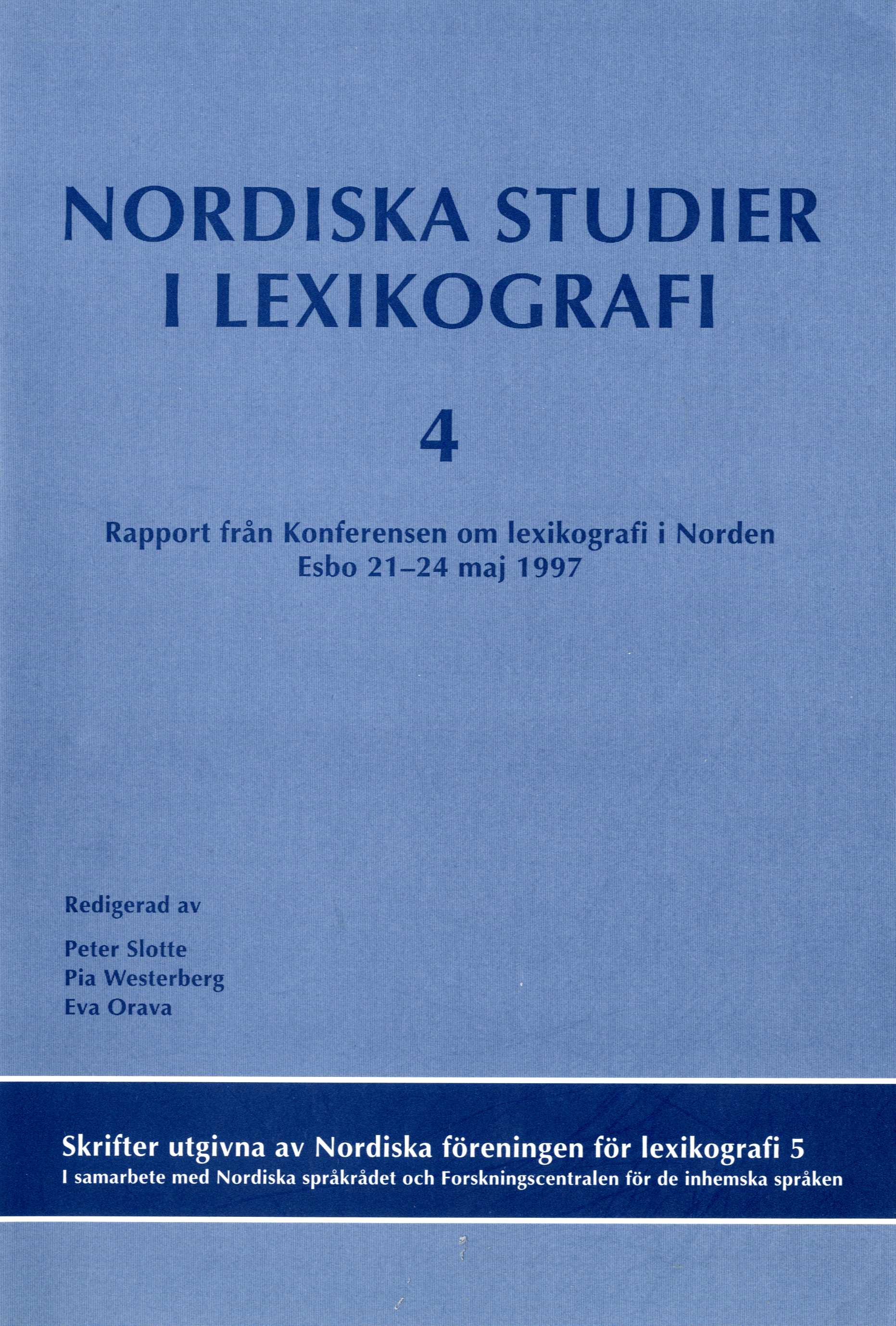Levende eller død: Refleksjoner omkring fremstillingen av leksikografiske eksempler
Abstract
When giving examples in dictionaries, the lexicographer can choose various forms of presentations, depending on the varied function the examples are intended to serve in the text. To demonstrate syntactic relations, such as different structures, case assignment, etc" constructed or so-called 'dead' examples are probably most to the point, i.e" giving verbs in the infinitive and using abbreviations for pronouns to show complements, thus keeping to as neutral a form as possible, as seen in these Icelandic examples: åhugi å e-u 'interest for sth. ', viss um e-o 'certain ofsth.', gleymae-u 'forget sth. '.On the other hand, real or so-called 'live' examples are more to the point to demonstrate usage of words and idioms in context: hUn hefur åhuga å iprottum 'she's interested in sports', eg er viss um ao petta er rett Tm sure this is correct', hann gleymdi ao hringja 'he forgot to telephone'. This paper discusses these two types of examples in the light of Icelandic data, and in connection to the varied needs ofusers, briefly considering alternative ways ofusing examples in dictionaries.Downloads
Published
1997-01-01
How to Cite
Jónsson, J. H. (1997). Levende eller død: Refleksjoner omkring fremstillingen av leksikografiske eksempler. Nordiske Studier I Leksikografi, (4). Retrieved from https://tidsskrift.dk/nsil/article/view/19543
Issue
Section
Artikler
License
Nordisk Forening for Leksikografi/NSL og forfatterne.





